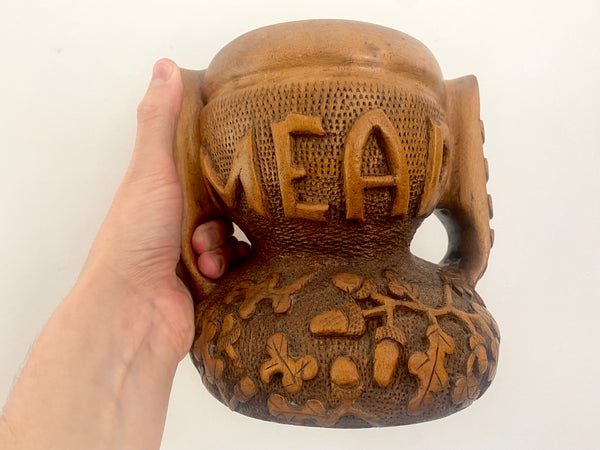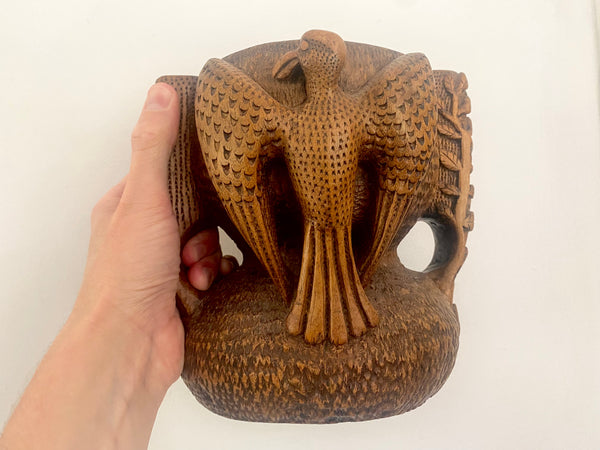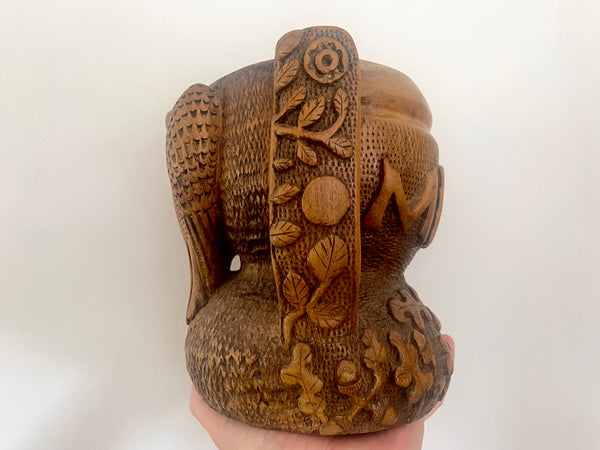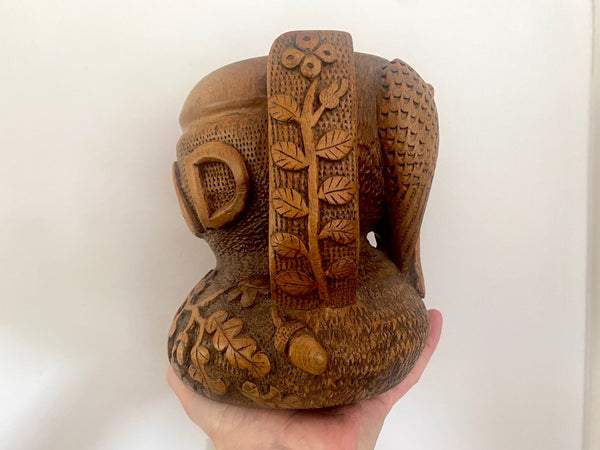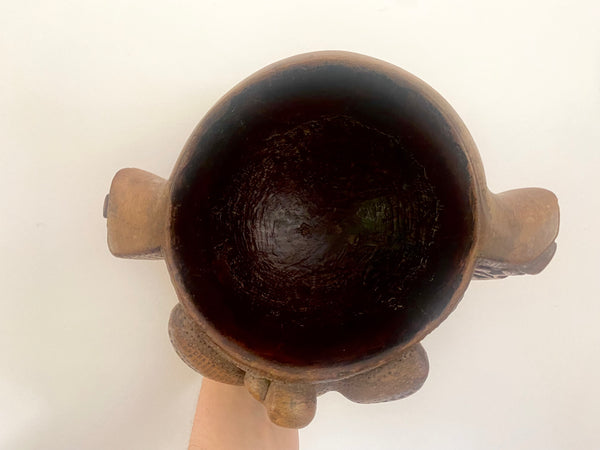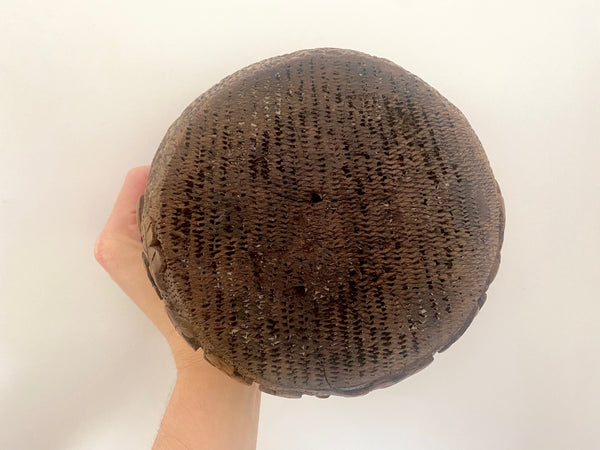An Astonishing Antique Late 19th Century Gothic Revival Carved Folk Art Ceremonial Mead Chalice
FREE UK & WORLDWIDE SHIPPING ON ALL ORDERS
An Astonishing Antique Late 19th Century Gothic Revival Carved Folk Art Ceremonial Mead Chalice. Heavily Carved With Acorns, Oak Leaves, An Eagle And The Word ‘Mead’. It Will Have Been Made At The Tale End Of The Gothic Revival Period And The Beginning Of The Arts And Crafts Era, Circa 1880. The Caving Is Quite Magnificent With Tell Tell Signs Of Both Periods. It’s A Heavy Old Lump Too! Seemingly Made From One Solid Piece Of Wood, Which Makes It Even More Impressive!
The Gothic Revival was a conscious movement that began in England to revive Gothic forms, mostly in the second half of the 18th century and throughout the 19th century. It was first sparked by the literary interest in medieval times that produced Gothic tales and romances. By setting their stories in medieval times, authors helped to create a sense of nostalgia and a taste for that period.
Mead was a popular drink in medieval England. They had bees in abundance due to the huge amount of wax required for candles, and so plentiful honey. Many different varieties of mead were made and some were thought to have medicinal properties, like being able to cure melancholy and hypochondria, while also having aphrodisiac qualities.
As symbols, the acorn and the oak leaf have long reflected strength and prosperity, while in early medieval iconography, the eagle was regarded as a symbol for Christ and his ascension to heaven.
This makes for quite a superb display piece! I’ve never seen anything like it and I most likely won’t again.
Condition is good, commensurate with age. Structurally sound, no issues.
Measures 19cm x 19cm x 16cm
Weighs 1.45 kg







